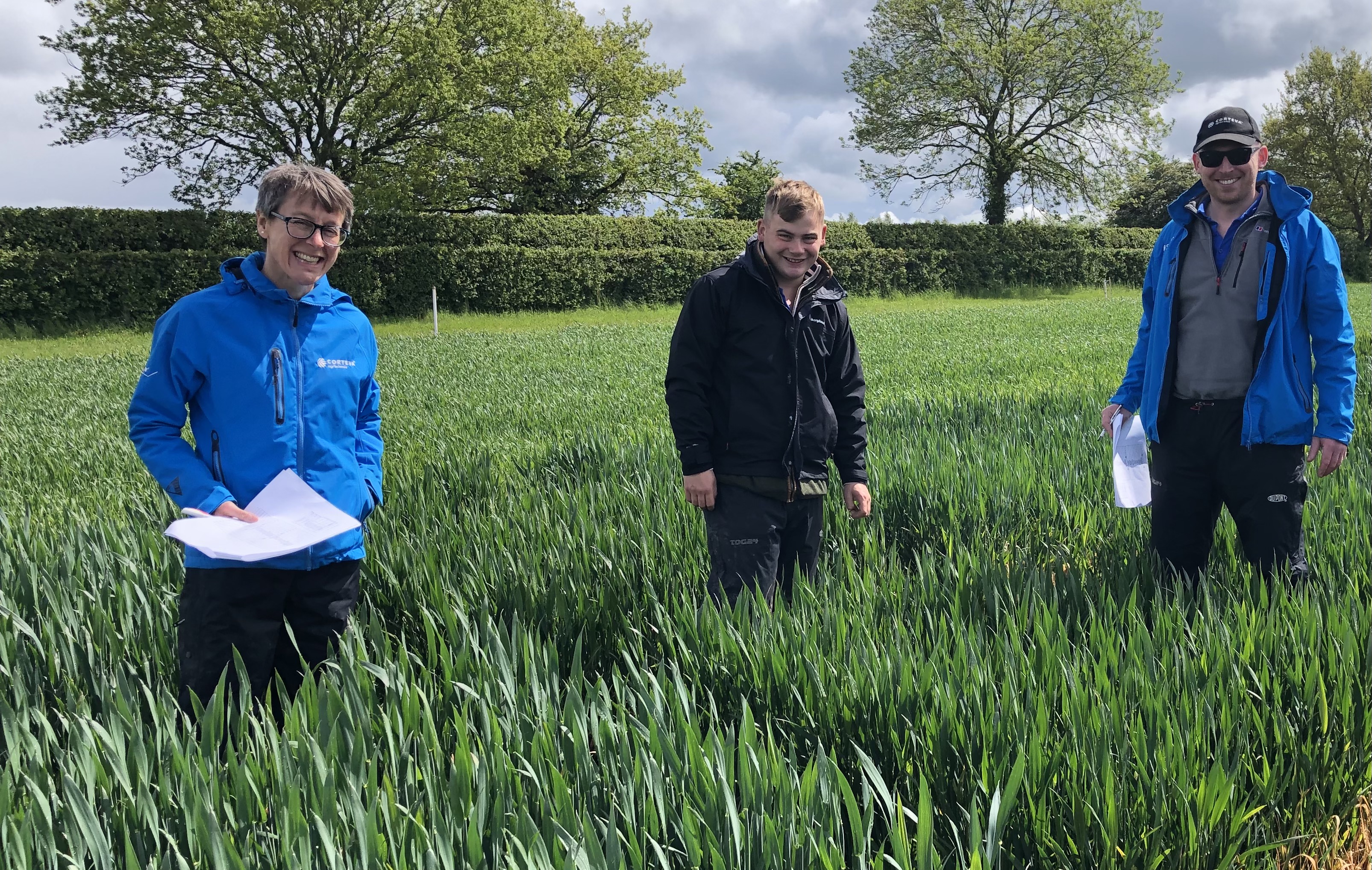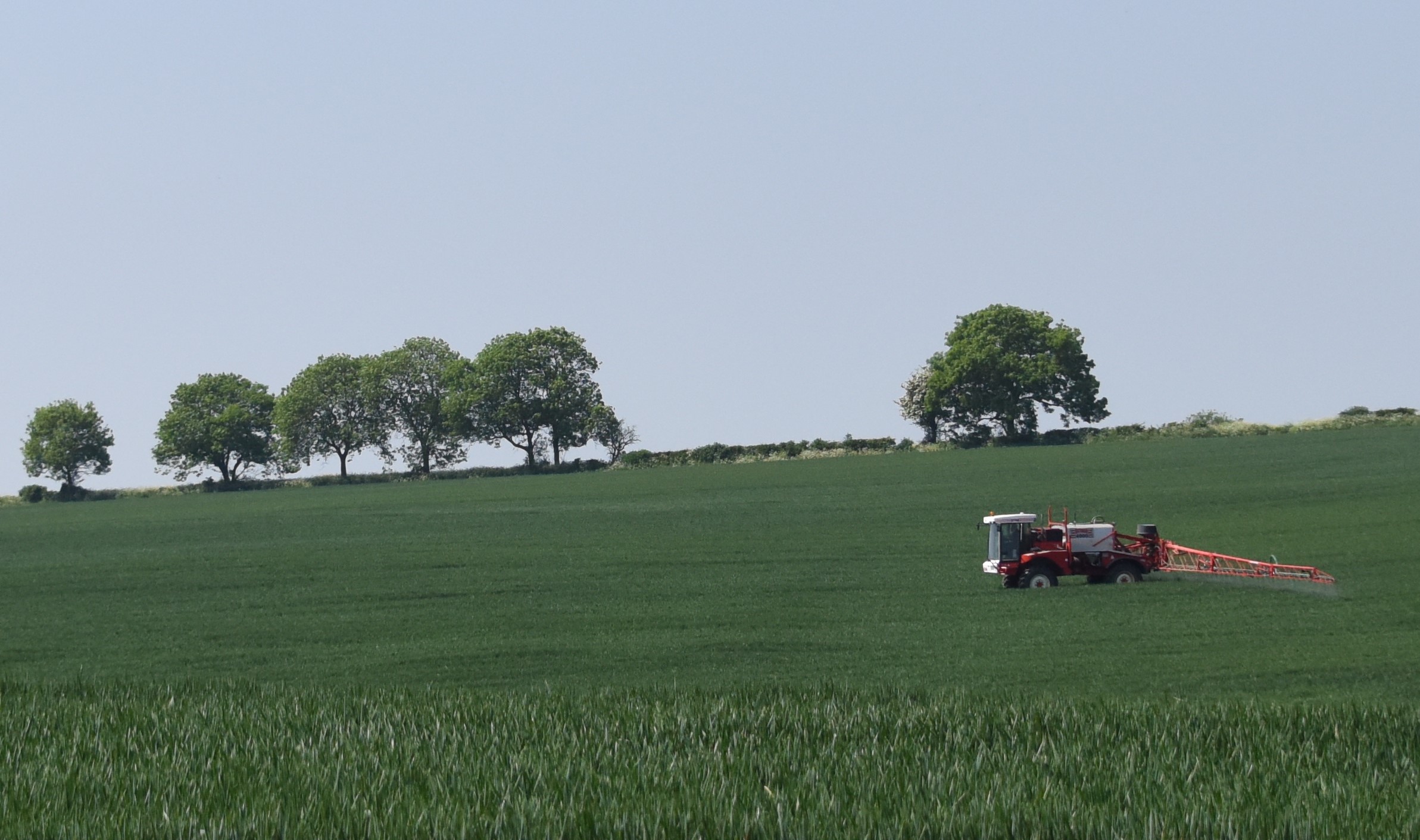By Sally Egerton, UK and Ireland Technical Manager
What a difference a few weeks has made to winter wheat crops.
A month ago we were doing rain dances – not just in a bid to get much-needed moisture into crops, but to try and keep warm too!
The dry, cold April seems a distant memory now as a lack of spray days this month has created a backlog of fieldwork which needs to get underway now.
If the forecast is to be believed, temperatures are set to return to something like they should be in May – just in time for T2 fungicide applications.
Our teams have been walking crops all over the country to assess disease pressure. Our findings have been mixed, but where T1s went on in a timely manner, generally the top leaves are looking clean although septoria can be found in the base. This was certainly the case in Shropshire when I took a look at a block of wheat. Watch this video to see what I mean.
 But clean leaves can hide things. Lab analysis of hundreds of plant samples has highlighted significant levels of latent septoria, suggesting that disease pressure could be greater.
But clean leaves can hide things. Lab analysis of hundreds of plant samples has highlighted significant levels of latent septoria, suggesting that disease pressure could be greater.
Microgenetics’ SwiftDirect service helps farmers understand the level of disease before making any decisions about the appropriate product and rate for a T2 spray.
The company reported that more than 400 samples sent to its lab had tested positive for latent septoria since T1 applications took place.
Unsurprisingly, many of these come from varieties which do not have a strong disease profile, so these growers wouldn’t have been surprised to learn that septoria was present, even if it wasn’t visible.
However, the lab has also seen positive samples from varieties with excellent septoria scores.
Corteva has sent in samples from its own trials work and the results back up the theory that disease is predominantly latent. From Swiftdetect tests on leaf one and leaf two from trials, 75% had low to medium levels of septoria. This suggests disease has moved right up the plant and should be of serious concern.
This reinforces how critical testing is before deciding which product to use and dose rate. It’s difficult to fight a battle if you’re not sure who the enemy is and what their numbers are, after all.
The best defence is to use a robust product that will deliver lasting protection during the next key growth stage of the crop.
Our new fungicide, Univoq, containing Inatreq active, is brand new chemistry with a unique site of action, offering protectant and curative control on all septoria strains.
It’s clear that a range of rates are going to be used this year. Univoq has the flexibility growers need to adjust their programmes according to their disease risk.
We advise 1.25 litres per hectare for most situations, but this can be adjusted up to 1.5l/ha in high pressure situations, or down to 1.1l/ha if necessary.
The Inatreq molecule provides long-lasting, robust protection, while also tackling any latent infection in the crop.
When applied at T2, Univoq will maintain green leaf area and allow the crop to build yield long after application.
We’ve identified a whole host of farmers who are going to be putting Univoq to the test this year. Follow our social media accounts to see what they find.
Facebook | Twitter | www.univoq.corteva.co.uk

Get in touch
Technical Hotline:
Phone: 08006898899
Email: ukhotline@corteva.com